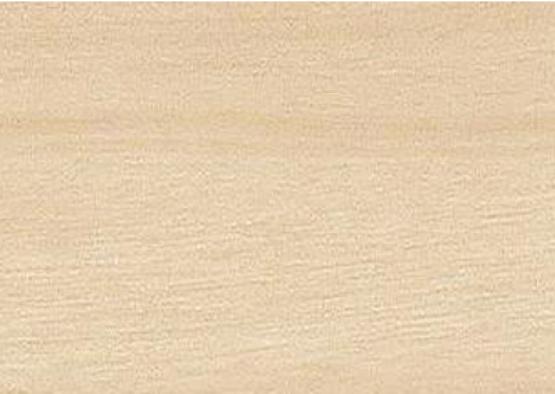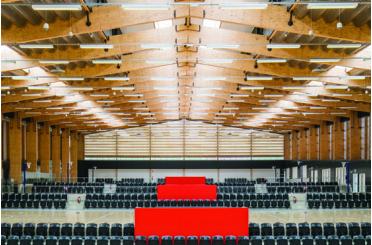Brown stringybark is a moderately durable Australian hardwood, used in general building construction and for fuel.
Eucalyptus blaxlandii, Eucalyptus capitellata
Eucalyptus baxteri

Brown stringybark is a hardwood species occurring in coastal and high-rainfall regions of southern New South Wales, Victoria, South Australia and Kangaroo Island. It can grow to heights of up to 40 metres.
As its trade name suggests, brown stringybark heartwood is pale brown in colour. Its texture is medium and even, with considerable variation in grain. Gum veins are common.
Brown stringybark timber exhibits moderate strength and durability, and is not recommended for in-ground applications. The sapwood of the species, not always visually distinct from the true wood, is immune to lyctid borer (powder post beetle) attack.
Although the timber of this species is not especially difficult to work, common applications are limited to general construction, notably building framework, and firewood.
Brown stringybark timber products are readily available throughout Victoria, and parts of New South Wales and South Australia.
Shrinkage
| Very Low | Low | Medium | High | Very High | |
|---|---|---|---|---|---|

|

|
||||
Tangential : |
10.40%
|
||||
Radial : |
5.10%
|
||||
Unit Movement Tangential: |
0.33%
|
||||
Unit Movement Radial: |
0.24%
|
Strength Group

Very High |
High |
Reasonably High |
Medium High |
Medium |
Reasonably Low |
Low |
Very Low |
||
Unseasoned: |
S1 |
S2 |
S3 |
S4 |
S5 |
S6 |
S7 |
S8 |
|
|---|---|---|---|---|---|---|---|---|---|
 |
|||||||||
Seasoned: |
SD1 |
SD2 |
SD3 |
SD4 |
SD5 |
SD6 |
SD7 |
SD8 |
|
 |
Stress Grade

| Structural No. 1 |
Structural No. 2 |
Structural No. 3 |
Structural No. 4 |
Structural No. 5 |
|
Unseasoned: |
F17 |
F14 |
F11 |
F8 |
F7 |
Seasoned: |
F27 |
F22 |
F17 |
F14 |
F11 |
Density per Standard

Seasoned: |
840kg/m3
|
|---|---|
Unseasoned: |
1150kg/m3
|
Joint Group

Very High |
High |
Reasonably High |
Medium |
Low |
Very Low |
|
Unseasoned: |
J1 |
J2 |
J3 |
J4 |
J5 |
J6 |
|---|---|---|---|---|---|---|
 |
||||||
Seasoned: |
JD1 |
JD2 |
JD3 |
JD4 |
JD5 |
JD6 |
 |
Colour

| White, yellow, pale straw to light brown | Pink to pink brown | Light to dark red | Brown, chocolate, mottled or streaky | |
 |
||||
Mechanical Properties
Modulus of Rupture - Unseasoned: |
73
|
|---|---|
Modulus of Rupture - Seasoned: |
126
|
Modulus of Elasticity - Unseasoned: |
13
|
Modulus of Elasticity - Seasoned: |
17
|
Maximum Crushing Strength - Unseasoned:  |
39
|
Maximum Crushing Strength - Seasoned: |
70
|
Impact - Unseasoned: |
15
|
Impact - Seasoned: |
17
|
Toughness - Unseasoned: |
Medium - 15 - 24 Nm
|
Toughness - Seasoned: |
Medium - 15 - 24 Nm
|
Hardness - Unseasoned: |
5.4
|
Hardness - Seasoned: |
7.5
|
Durability
| Low | Moderate | Reasonably High | High | |
| (0 - 5 yrs) | (5 - 15 yrs) | (15 - 25 yrs) | (more than 25 yrs) | |
In-Ground: |
 |
|||
| (0 - 7 yrs) | (7 - 15 yrs) | (15 - 40 yrs) | (More than 40 yrs) | |
Above ground: |
 |
|||
| (0 - 20 yrs, usually < 5) | (21 - 40 yrs) | (41 - 64 yrs) | (More than 60 yrs) | |
Marine Borer Resistance: |
 |
Lyctid Borer Susceptibility: |
Not Susceptible |
|---|---|
Lyctid Borer Susceptibility - Other: |
|
Termite Resistance: |
Not Resistant
|
Fire Properties
Group Number - Other: |
3 if used on MDF or particleboard ≥12mm; veneer thickness 0.6-
|
|---|---|
Average Specific Extinction Area: |
<250
|
Bushfire Resistance: |
BAL 12.5 and 19 – All AS3959 required applications
|
The heartwood of this brown stringybark is a pale brown colour. Sapwood may not be clearly defined. Its texture is medium and even with considerable variation in grain. Gum veins are common.
Brown stringybark is commonly used for building framework and for fuel.
Brown stringybark is not difficult to work.

Portal Frames
Allied Forest Products

Australian Solar Timbers
Dekhar Outdoors

Outlast Timber Supplies




